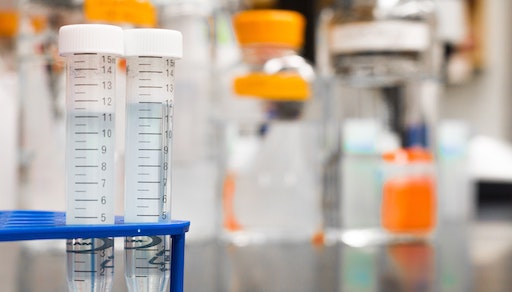Hydrochloric acid, or muriatic acid or HCl, is a colourless and highly corrosive liquid chemical with a distinctively pungent odour. It is the simplest of all chlorine-based acids. Its chemical formula is HCl, and its molar mass is 36.46 g/mol. But what are the main uses of this chemical?
Below we explore five interesting uses for hydrochloric acid, as well as detail where it can be found and the risks when mishandling this chemical in the lab.
What is Hydrochloric Acid?
Hydrochloric acid is found in the gases that evolved from volcanoes, particularly those found in Mexico and South America and most mammals’ digestive tracts.
What is hydrochloric acid made of?
In its concentrated form, hydrochloric acid is an aqueous solution of hydrogen chloride and has an irritating odour and presents safety risks if mishandled. Exposure to strong concentrations of this chemical can cause severe burns on the skin or eyes, vomiting or gasping sensations while inhaling fumes, and respiratory difficulties if inhaled in high concentrations or over long periods. Inhalation of hydrochloric acid may even lead to death in some cases.
Interesting Uses for Hydrochloric Acid
- Steel Pickling: Steel pickling is a process which removes impurities and rust from the surface of steel to create a smooth finish. In this process, hydrochloric acid acts as a catalyst, reacting with the oxide layer on the surface of the steel to form iron chloride, which is then washed away with water. The concentration and temperature of the hydrochloric acid solution must be carefully managed to be effective in pickling steel; otherwise, it can cause damage to the treated surfaces. After pickling, residual hydrochloric acid must be neutralised before disposal to prevent contamination of surrounding water sources or soil.
- Products, cleaners, and food processing: Hydrochloric acid is commonly used as an ingredient in industrial cleaning solutions to remove rust or mineral deposits from surfaces and is used for water treatment to reduce the pH level of water sources such as swimming pools. Hydrochloric acid is often used in food processing to lower the pH levels of foods and beverages like wine or vinegar for a better taste. As a powerful disinfectant, it can also kill harmful bacteria in food products and be essential to household cleaning products.
- Oil Production: Hydrochloric acid enhances production from existing wells, particularly those with low permeability or formation damage. In this process, hydrochloric acid is injected into the well and then allowed to react with the rock formations, increasing the amount of oil that can be extracted. Hydrochloric acid is also used for “acidising”, which involves dissolving calcium carbonate deposits to create more permeable channels within a rock formation for oil and gas to flow through freely.
- Glue: Hydrochloric acid is an essential ingredient in the production of glue. Mixing hydrochloric acid with formaldehyde can create a strong adhesive, which is commonly used for industrial applications. This type of glue is known as methylene diphenyl diisocyanate (MDI), used in many industries, including woodworking, automotive, construction, and marine repair. It is also used to make permanent fixtures such as vessel hulls, doors, windows and stone walls.
- Laboratory Uses: Hydrochloric acid is one of the six-strong mineral acids commonly utilised in chemistry. It has a variety of uses, including creating an acidic or basic solution, titration experiments, and cleaning glassware and other surfaces. Additionally, it can be used to break down complex molecules into smaller components for further analysis.
How to Protect Yourself from Hydrochloric Acid in the Lab
When working in a lab environment with hydrochloric acid, it is vital to take measures to ensure your safety. Here are some tips for protecting yourself from hydrochloric acid:
- Wear protective eyewear , gloves, and a mask. This will protect you from contact with the acid and any fumes it gives off.
- Ensure the lab has adequate ventilation to reduce the risk of inhaling hydrochloric acid fumes.
- Keep spills of hydrochloric acid away from the skin and eyes and swiftly clear up spillages.
- Store hydrochloric acid correctly in sealed containers labelled at room temperature.
- When disposing of hydrochloric acid, ensure it is done safely according to local regulations and best practices to prevent contamination of water sources or soil.
Hydrochloric acid (HCl) is a highly corrosive chemical with many applications, from enhancing oil production to breaking down molecules in laboratory experiments for further analysis. However, due to its extreme corrosiveness, hydrochloric acid must be handled properly to minimise the risk of injury. Therefore, safety protocols must be followed when working with this chemical in the lab.
At Techmate, we supply hydrochloric acid alongside an extensive catalogue of other chemicals and personal protective equipment to keep handlers of corrosive chemicals safe. Explore our range here, or for more information, get in touch with our expert team, who can assist.


